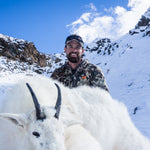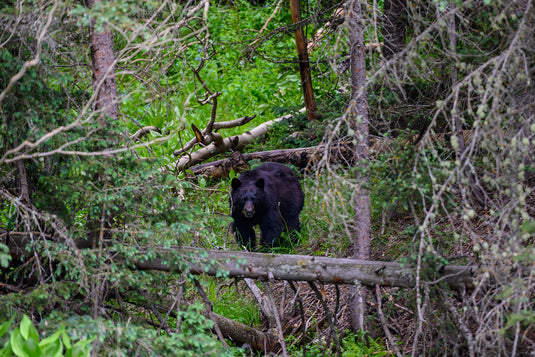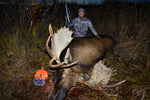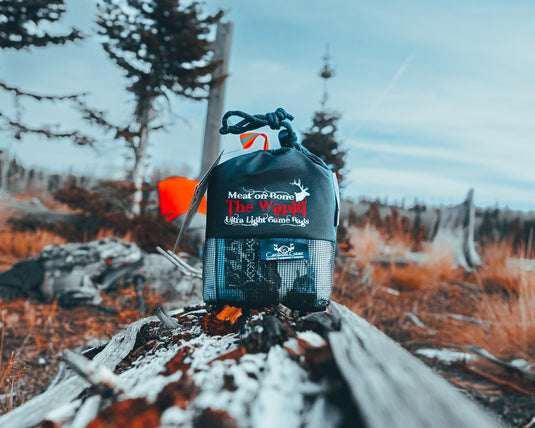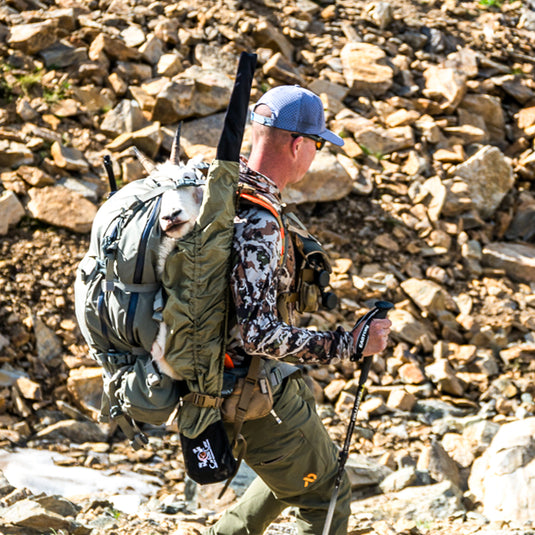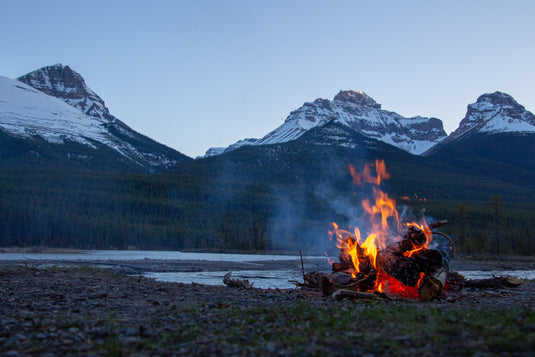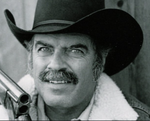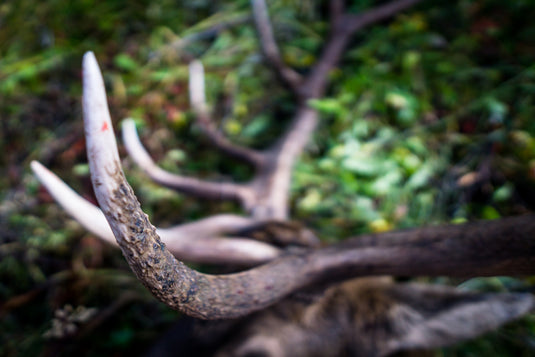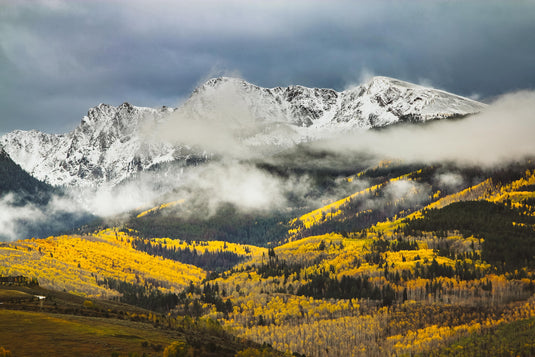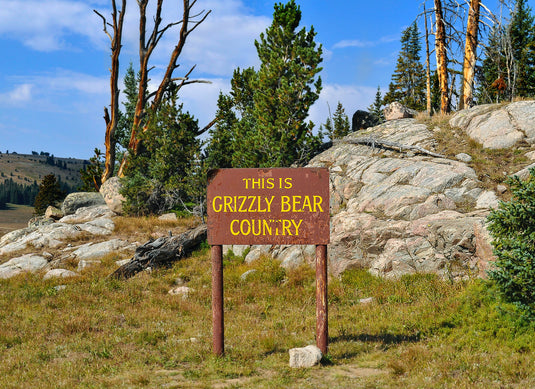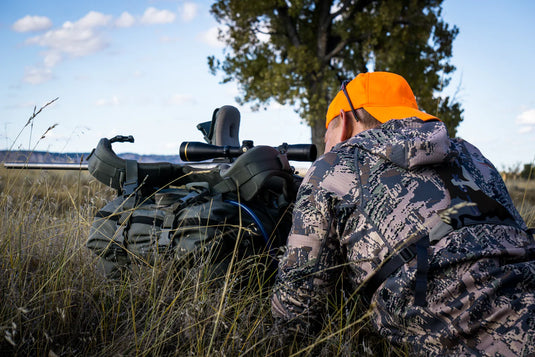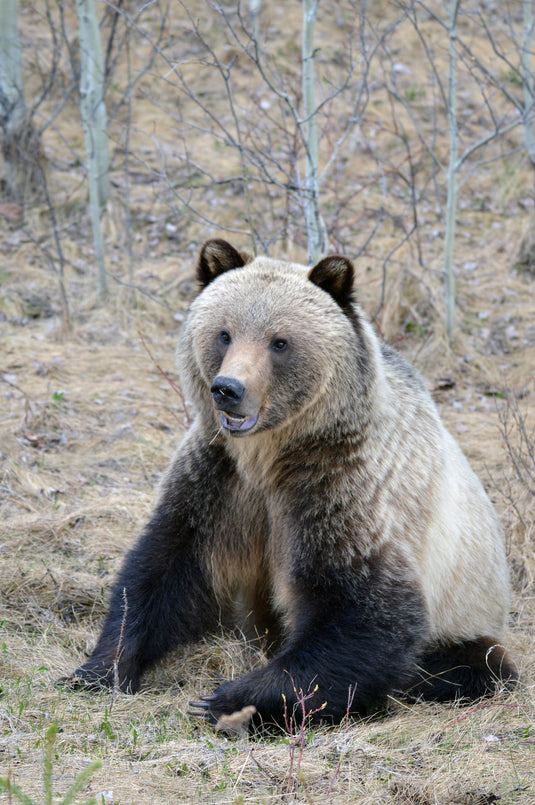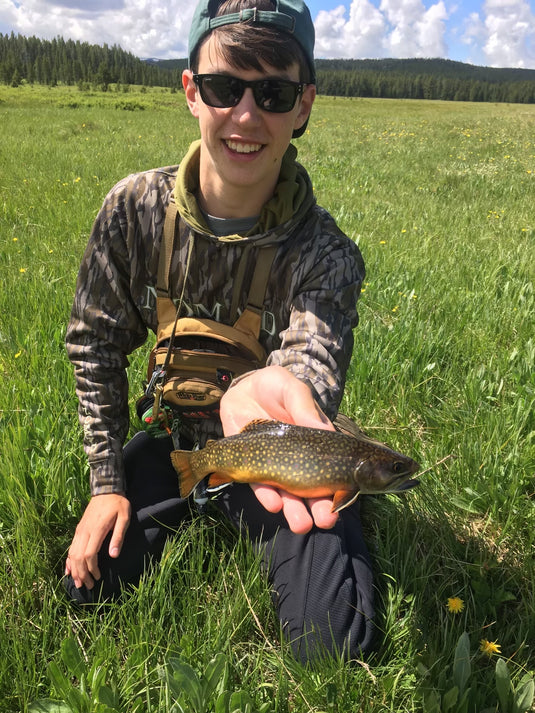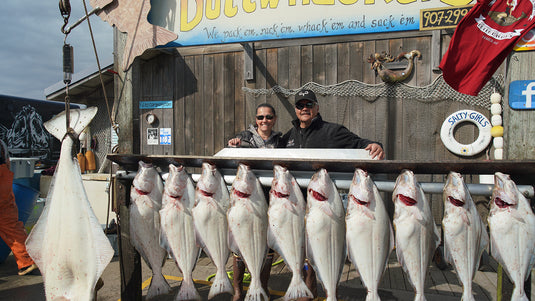Late-season hunts for both elk and mule deer can be very productive, often boasting higher success rates. But there’s usually one big catch – the weather. Late season hunting is about staying in the field, staying comfortable and focused even when the weather is terrible. In this article, we’ll offer a few of our tips to stay comfortable on a late season hunt.
In case you missed it, take a look at our other articles in this series. In the first part, we offered some ideas for early season layering. And in the second part, we discussed efficient layering systems for the unpredictable mid-season hunts. In this third and final part, we’ve got a few ideas for late season layering. Of course it’s important to remember that there’s not one right answer. There are many ways to approach a layering system for cold weather. Have your own tips? Please leave them in the comments below!
In recent years, there has been an increase in the popularity of archery elk hunting. And for good reasons. Those early season hunts can be a lot of fun. The weather can be mild and the elk are bugling. There’s a lot to love about hunting earlier in the year. But if we had to put our money on one hunt to fill the freezer each year, it would probably be the late-season hunts.
When I’m planning a late season hunt, I actually pray for cold weather. Cold weather means that animals will spend less time hiding in dark timber. Instead, they’ll spend more time on their feet, in open areas, and on south-facing slopes where food and warmth are available. Plus, when the weather is bitterly cold, it may reduce pressure from other hunters. If you can be the one out there hunting from before daylight until after dark, you’ll certainly be at an advantage.
With proper equipment, boots and a solid layering system, hunting in Cold weather can actually be a lot of fun. Here’s how we like to approach a layering system for those late season hunts…

What to Expect on a Late Season Hunt
When it comes to preparing a layering kit, we actually find these late season hunts a bit easier than the mid-season hunts. In large part, that’s because it’s more predictable. During October, you might experience 70-degree days or 10 below zero. It’s hard to prepare for such variability. But for the most part, you can expect these late season hunts to be cold.
In November in the Colorado high country, we might get highs into the 50s. But anything above that would be unusual. Unless you’re hunting at low elevations (some late season mule deer hunts could fall in to that category) it’s probably wise to prepare for temperatures that are consistently below freezing.
The other thing to consider when preparing for a late-season hunt is that these hunts often require a lot of glassing – and that means stationary time. Whether you’re hunting bachelor bull elk off by themselves, or rutting mule deer bucks cruising for does, this time of year usually requires a lot of effort behind the glass. When you’re sitting still for long periods of time, you need clothing that can keep you warm.
Another consideration on any late season hunt is weight. The colder the weather, the heavier your pack gets. Be careful to focus on layering pieces that have a high warmth-to-weight ratio. Otherwise, you pack can quickly become very heavy. For example, high quality goose down (800-fill or better) is your best friend on late season hunts. Nothing is warmer for so little weight. But beyond just a down puffy jacket, focus on high-loft items that are warm for their weight.

Pack Thermal Base Layers
Staying comfortable in extreme conditions begins with quality base layers. Consider packing thermal weight merino wool long johns, top and bottoms. Merino wool is highly breathable, naturally odor resistant and retains its insulating properties even when wet. So even if you need to charge up a mountain and work up a sweat, wearing a single, thermal-weight base layer top is a great way to go.
Over my long underwear bottoms, I’ll usually wear just a normal mid-season hunting pant. This is largely personal preference. But even on late season-hunts, I don’t prefer insulated or soft-shell hunting pants. I’d rather be able to add and remove long johns to adjust, rather than be stuck with a pant that’s always lined or insulated. If conditions are extremely cold, I’ll add a pair of zip on/off puffy pants for stationary glassing sessions.
Pack Highly Insulating Mid-Layers
When packing for a late-season hunt, your mid layers are absolutely critical. As mentioned above, focusing on high-warmth items that are lightweight is critical. Absolutely no material, synthetic or otherwise, has a higher warmth-to-weight ratio than quality goose down.
We say “quality” goose down because not all down is created equal. Look at the fill number on any down product. A higher the number basically means that it takes fewer feathers to achieve the same amount of loft. For example, a down jacket made with 800-fill down is going to be much more compressible, easier to pack and usually lighter than a jacket made with 600-fill down.
On an average late-season hunt, I’ll pack a heavily insulated puffy down jacket for glassing and periods of inactivity. This is also great for hanging out at camp at night. When temps are very cold, I will also bring a pair of puffy pants to wear while glassing. Over top of these I’ll often wear my rain gear (we’ll cover that below).
While down is great when you’re stationary, it’s no good when you need to hike any distance. With so much insulation and a nylon face fabric, down jackets are not breathable. Take a walk in a big down puffy and you’ll be sweating almost immediately. With that in mind, I also pack a mid-layer piece that’s better for periods of more strenuous activity. Usually this is a fleece hoody, or a soft shell jacket. I often prefer synthetic fleece because it’s more breathable. But breathability comes at the expense of not stopping wind. So if I know that conditions are going to be particularly windy or cold, a soft shell jacket can be a great option on those late season hunts.

Pack Heavy Duty, Breathable Rain Gear
Out of everything in your late season layering system, rain gear is going to be the most expensive by far. But as we’ve mentioned in our previous article on mid-season layering, this is an absolutely critical piece of your kit. Investing in a set of quality, heavy duty, breathable rain gear will go a long way toward keeping you comfortable in extreme late season conditions. In fact, if I had to prioritize everything I wear in order of importance, rain gear would be at the top of the list along with my boots.
Even when there’s no precipitation in the forecast, rain gear is an important part of any layering system. In addition to being waterproof, it is also your wind-blocking layer. When you’re sitting on a windy ridge glassing, you may be shocked at what a difference it makes when you’re wearing both a rain jacket and pants. Convective heat loss takes a very serious toll on your body. Stopping that wind will make an enormous difference.
Rain gear also adds a layer of protection over your puffy down jacket and pants. Down items are usually the most delicate pieces in your kit. Putting on a rain jacket and pants over those items while you glass will not only help retain the heat – it will also protect them from getting sliced on a rock or a sharp stick.
The Extremities: Hats, Gloves and Footwear
Finally, don’t forget that keeping your head, hands and feet warm are essential to staying out all day on a late season hunt. A warm, thermal beanie is so important, that I’ll often keep a spare in the truck. In case one gets wet or gets lost, it’s nice having a backup. The same goes for gloves. If a pair of gloves gets wet, having a backup pair is critical. I also like to bring different glove options for glassing and for hiking. A pair of down glassing mittens is great for sitting behind the binoculars. And a more breathable pair of merino wool gloves is ideal when on the move.
Last, it would be difficult to over-emphasize the importance of a great pair of boots on any late season hunt. Here at Caribou Gear, we’re all big fans of Kenetrek boots. They are built to handle the most extreme conditions. The Mountain Extreme 400 is an insulated mountain boot that will take me through almost any conditions. If it’s going to be extremely snowy or cold, then I’ll pack my Kenetrek Grizzly Pac Boots.
And we’ve mentioned this several times before, but don’t forget that the best boots in the world won’t function properly if you’re not wearing quality socks underneath. A merino or merino-synthetic blend sock is essential. Don’t wear cotton under any circumstances. Not only do I keep spare socks back at camp – but I actually pack a pair of extra socks in my daypack on late season hunts. If your first pair gets sweaty or wet, it can feel amazing to put on a fresh pair of socks halfway through the day.

By Ryan McSparran


